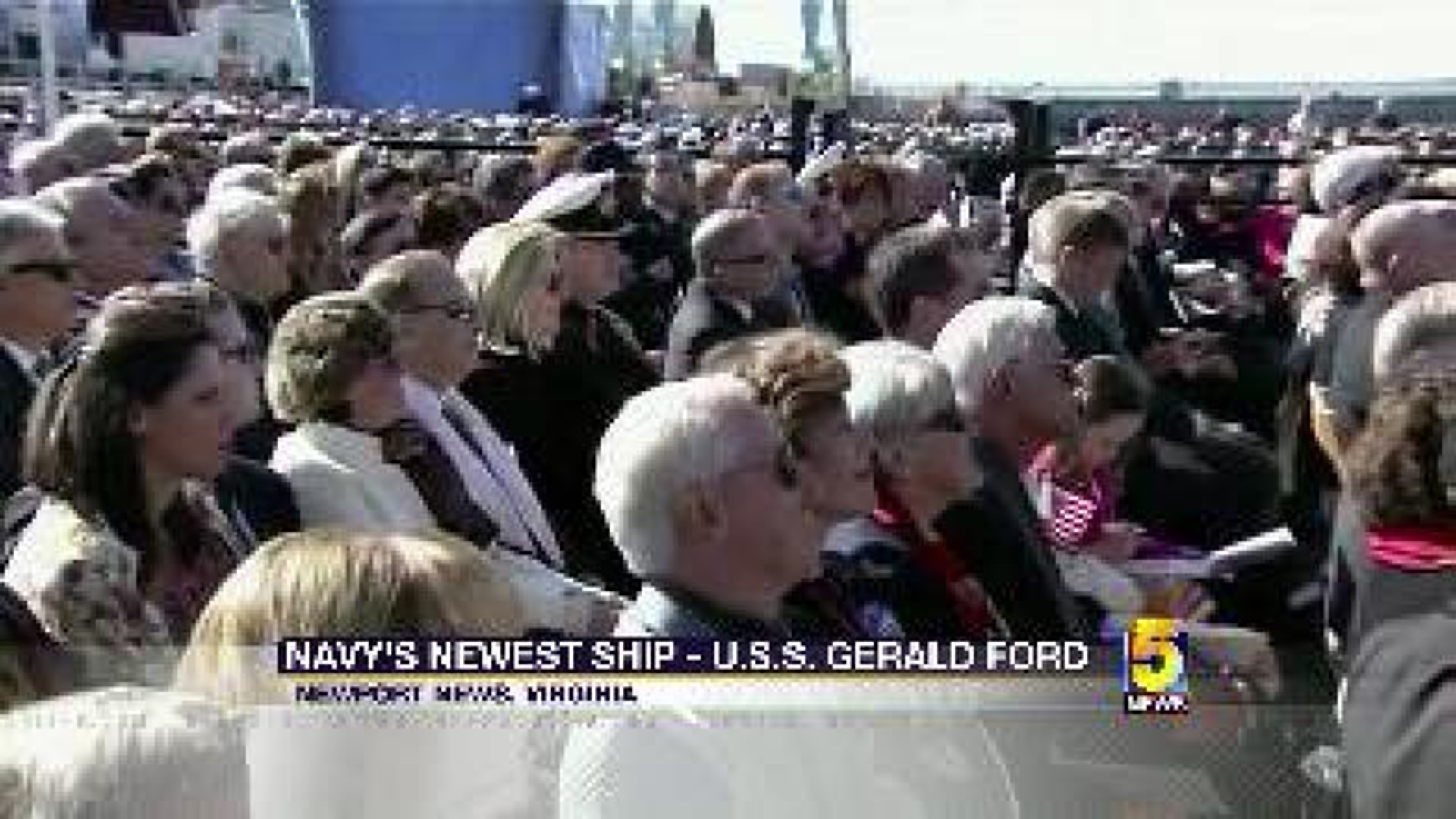The U.S. Navy entered the 22nd century on Saturday.
In Newport News, Virginia, the Navy christened its newest aircraft carrier, the USS Gerald Ford.
This nuclear-powered ship is the first of a new class of at least 10 carriers that the Navy expects will be steaming the seas, protecting the United States well into the next century.
The Ford itself is projected to stay in service until 2057.
This carrier is state-of-the-art in naval architecture, according to news releases from the Navy and the shipbuilder.
For example, the Ford will use electromagnetic force, similar to how modern roller coasters are propelled, to catapult planes off the deck instead of the pressurized steam used in today's fleet.
The arresting gear that grabs planes when they land will be software-controlled, with the goal being less wear and tear on the planes.
The ship looks much like the current Nimitz-class carriers. It's roughly the same length, width and weight.
But the island - the superstructure that rises above the flight deck - is skinnier, taller and set farther aft on the ship, allowing for more flight-deck operations and plane maintenance. It's also part of the reason the Ford will be able to carry more warplanes and launch 25% more air missions per day than the current carriers in the fleet, according to the Navy.
Below the waterline its four 30-ton propellers will be driven by two newly-designed nuclear reactors.
The planes that will eventually be jumping off its deck in the decades ahead haven't even been designed yet. It remains to be seen if those planes have pilots or will be controlled by operators with computers who will "fly" the aircraft from the safety of a remote location.
This new class of carriers is designed with built-in flexibility to accommodate future Navy decisions about aircraft and missions.
And it's designed to do all this on the cheap. Most of the lights in the ship will use high-efficiency bulbs that will last twice as long between changes. And the ship is designed to require 30% less maintenance over its lifespan.
Finally and most importantly, because of designed efficiencies, it'll put to sea with 1,000 fewer sailors and Marines than a Nimitz-class carrier. Over the life of the Ford, the efficiency of the ship, the Navy said, will save $4 billion.
The ship is named after President Gerald R. Ford who served on the carrier USS Monterey during World War II and who later became President when Richard Nixon resigned in the wake of the Watergate scandal.
"It's very fitting that our next carrier, a ship that will calm the unknown crises of the future by its very presence offshore, will be named for President Gerald Ford," Navy Secretary Ray Mabus said at the ship's keel-laying.
The push to name the ship after Ford began years ago and then-Defense Secretary Donald Rumsfeld actually told Ford about the ship's name months before Ford's death in 2006, making the new carrier one of the few Navy ships named after a living person.
"How fitting it will be that the name Gerald R. Ford will patrol the high seas for decades to come, in the defense of the nation he loved so much," Rumsfeld said at Ford's funeral.
Ford's daughter, Susan Ford Bales, had the honor of breaking the traditional bottle of champagne on the ship's bow as it is launched.
Capt. John F. Meier has already been named as the ship's first commanding officer. He will be responsible for monitoring the final months of construction and likely be onboard when the Ford goes on its first sea trials.
"I'm thrilled to be here," Meier said in a Navy release last summer. "I couldn't ask for a better assignment or a greater honor."
But as the Navy launches its newest carrier, not all is well in the land of flattops.
Just last month, Adm. Jonathan Greenert, chief of naval operations, conceded that because of budget issues the Navy may have to reconsider how many aircraft carriers it will keep in the fleet
"You have to go where the money is, and carriers and air wings are quite expensive," Greenert said, according to a Virginia newspaper, the Daily Press. "I'd hate to say it is inevitable, but we have to look very hard at it."

